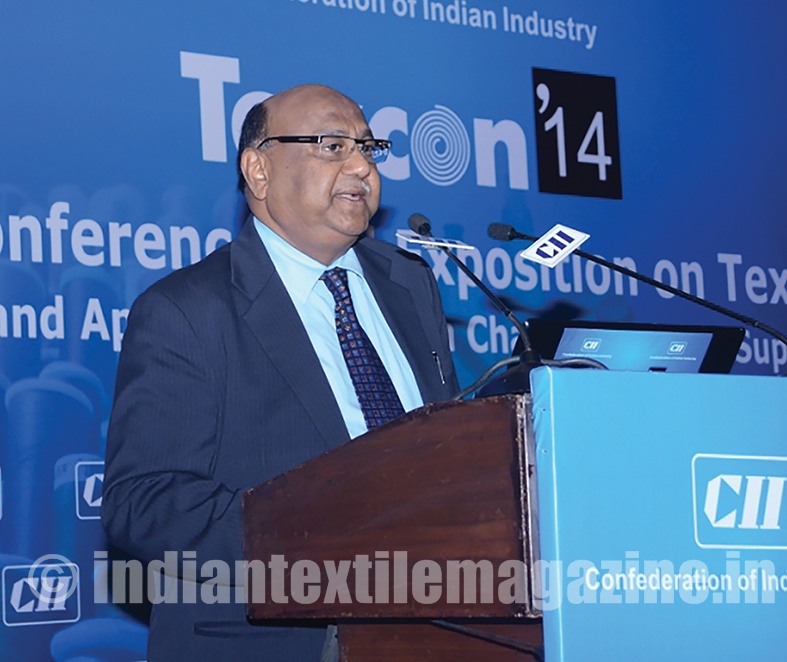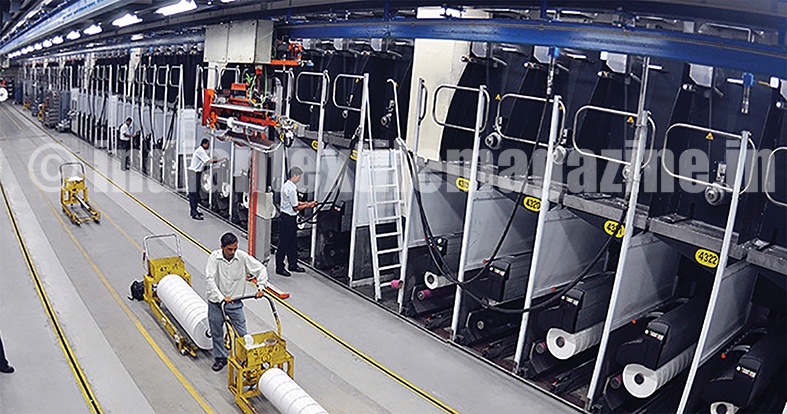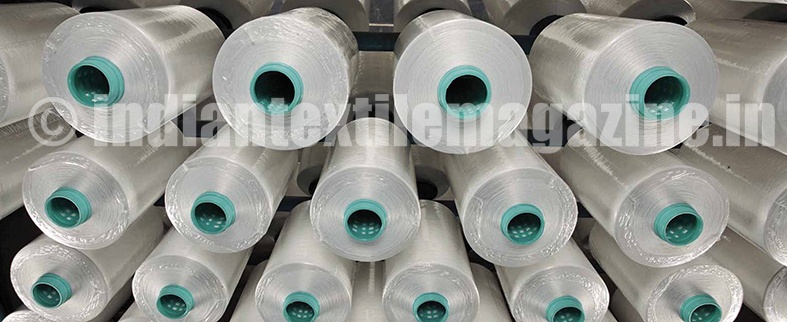Indorama Industries Ltd. has been spearheading the Spandex revolution in India. ‘Inviya’, the flagship Spandex brand of Indorama, has established its presence in the Indian and global markets. Indorama Industries, part of Indorama Corporation of Singapore, is now a name synonymous with pioneering advancements in manufacturing of polymers for textile and apparel production. The company which had invested $80 million in 2012 for establishing a sprawling manufacturing complex, spread over 25 acres at Baddi in Himachal Pradesh, has clocked impressive growth rates, despite some unique challenges being faced by Indian manufacturers, in recent times.

In an exclusive tete-a-tete with The Textile Magazine, Mr. Y.C. Gupta, Business Head of the company, gave detailed insights into the company’s growth story, the key challenges being faced by manufacturers in the Indian market and shared his wish list with respect to the steps that the Government needs to take in order to give a further fillip to the Indian spandex industry.
The growth rate of the Spandex business has been impressive according to Mr. Gupta. “The global requirement of Spandex has increased and in India the business has been growing at a CAGR of about 15%, which is one of the highest in any industry”, he said, highlighting the positive trends.
However, Mr. Gupta was also quick to point out the flip side of the story. Going into the performance of Indorama in 2015, with respect to its Inviya brand, he explained: “We have been able to sell our 100% production capacity. But there was a big pressure on prices, due to dumping of Spandex in India by Vietnam, China, Korea, etc. Their products are flooding Indian market and have created excess capacity of 6,00,000 MT. Moreover, India is importing spandex @ 1% import duty from ASEAN countries under FTA with them. This trend is killing the domestic Indian Industry. The foreign suppliers are thriving at the cost of the Indian Industry”.
Lamenting this trend, Mr. Gupta stated that this dumping of Spandex has put a spanner into the future expansion plans of the company. Pointing out the reasons he explained: “We are ready to expand our capacity by 100%. In fact the project report for our expansion is also ready. Meanwhile with countries like Vietnam, Korea, China, etc., dumping Spandex here at extremely reduced prices, the prices have been dropped by about Rs. 100 per kg in last one year. With this sudden development, we are not even in a position to pay our interest cost, leave aside the depreciation. The Government has also not given any support to us by increasing the import duty of Spandex yarn inspite of our several representations. The only benefit, the new Government has given us is to reduce the import duty, on our two major raw materials to nil from 5% in the budget of 2014. There after no change has been done to save the domestic industry”.
Mr. Gupta added: “We are ready to expand, provided the Government by increasing the import duty offers us a level playing field. If this is done, we are ready to expand our capacity by 100% within one year”.
The company which claims a market share of about 30% of the Indian Spandex market, is known for its consistent R&D focus, one of the key factors in its success story. Speaking about new launches and breakthroughs in technology in recent times, Mr. Gupta mentioned that the company has been developing and launched new products which are as good as other top brands of Spandex imported from Vietnam, Korea, China, Japan, Singapore, etc. The company is also exporting about 15-20 per cent of its Spandex production to key global markets including countries in the continents of Asia, South America, Europe, as well as countries like South Africa.
Mr. Gupta does not think that the depreciation in the rupee value has helped Indorama have the edge over competitors, as customers would be paying more for importing.
Explaining the reason why it is so, he said: “It is unfortunate that we are importing 100% raw materials from various countries, majorly from Asian countries from where the finished Spandex is being imported at 1% duty.
We are paying 7.5% import duty on our 10 raw materials and only on 2 major raw materials. The import duty was reduced to nil from 5% in 2014 by the present Government. The fact that the prices of Spandex have been reduced by more than Rs 100 per kg by foreign suppliers in India and also the fact that import duty has been reduced to 1% are making the Indian domestic industry sick. While the raw material prices have gone down, you need to remember that the percentage of reduction in prices is very minimal and is a fraction of reduction in spandex prices which is increasing our losses. Therefore, the appreciation in US Dollar is not giving us any benefit, due to our huge imports”.
Giving his take on how the situation can be salvaged and fast-track the Indian Spandex industry Mr. Gupta opined: “The total global Spandex production is 8,00,000 MT, out of which about 6,50,000 MT is produced in China, Korea, Vietnam, Taiwan, Singapore, etc. They have already created excess capacities and they are dumping their product of spandex in various countries like India. For their own survival they are killing the domestic industries of other countries. They are getting benefited because of their huge production capacity, low raw material cost, as well as overhead cost. The consumption of Spandex is growing day by day in almost every textile product as consumers these days are demanding more comfort in garments. Apart from garments, Spandex is also used for medical application like crape bandage, diapers for children and adults, crape adhesive bandage being used after surgery, shape wear, etc. Now, if the Indian Government can give some protection by increasing import duty on Spandex, we can foresee the Indian Spandex industry growing at least at a rate of 15 % CAGR in the future”.
Mr. Gupta further felt that the Union Government should abolish import duty on all raw materials used for manufacturing Spandex. He also added that the Foreign Trade Agreement (FTA) of ASEAN, RCEP, CEPA, etc., should be revisited by the Indian Government and Spandex should be withdrawn from the list of exempted items, to be imported in India at nil duty, as now it is being produced in India.
Going further into details, he said: “The import duty must be taken to pre- MFN rate of minimum 10% and some anti-dumping duty should also be imposed to counter balance the dumping of Spandex at extremely low prices by foreign suppliers if the Government is serious about making its ‘Make in India’ program a success. It may be mentioned that the consumption of Spandex in any fabric is normally ranging between 2 to 5% and any increase in import duty will have insignificant impact on the finished textile product. Even a 20% increase in import duty on 5% consumption in fabrics, it will only be an increase by net 1% in the total cost of fabrics. If the ratio of cost of fabric to the price of garment is 1:5 then the net impact on the garment price will be only 0.2%, which is absolutely negligible for the consumer”.

